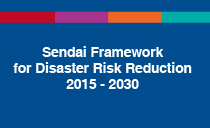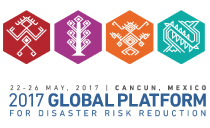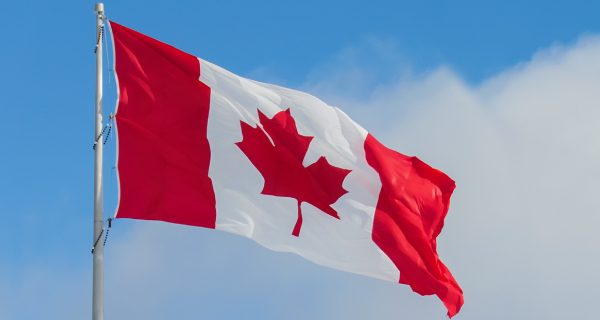UNISDR |
Public Safety Canada |
|
Structure of Canada's emergency management system
The majority of emergencies and natural disasters in Canada are handled locally or at the provincial/territorial level and do not require direct federal involvement in the response phase. However,if an emergency threatens to overwhelm the resources of any individual province/territory, the federal government may intervene at the specific request of the province/territory or concurrently it may act within its areas of jurisdiction such as aeronautics, nuclear safety or telecommunications, Public Safety Canada (PS) was created in 2003 to better address and coordinate public safety and emergency management issues for the federal government. In addition to the department itself, the PS portfolio includes five agencies: Royal Canadian Mounted Police; Canadian Security Intelligence Service; Correctional Service of Canada; National Parole Board; and Canada Border Services Agency. The portfolio also includes three independent review bodies. For more information about the department and its portfolio, visit http://www.publicsafety.gc.ca/cnt/bt/index-en.aspx#prtfl Emergency management organizational structure Canada’s has adopted an “all-hazards” approach to emergency management that addresses natural, technological and human-induced hazards and disasters. Canada’s emergency management system encompasses the integrated functions of prevention/mitigation; preparedness; response and recovery. The Federal Emergency Response Plan (FERP) has been developed to coordinate thefederal response to emergencies when an integrated Government of Canada response is required. The Plan provides a framework for interdepartmental coordination and cooperation and identifies the role of the Federal Coordinating Officer (who oversees the coordination of the federal response efforts). All federal Ministers are responsible for developing, maintaining, testing and exercising emergency management plans to address risks in their area of responsibility. In most cases, federal departments manage emergencies with event- or department-specific plans based on their existing authorities and responsibilities
Emergency management tasks and objectives At the national level, emergency management leadership and coordination in Canada is the responsibility of PS. The department’s strategic objectives are to protect people, property and the environment from the harmful effects of risks, emergencies and disasters. PS in conjunction with other federal institutions and provinces aims to enhance the safety and security of all Canadians by strengthening the resiliency of communities, including Indigenous communities, and delivering policy and program coordination across the four pillars of emergency management: prevention/mitigation; preparedness; response; and recovery. PS is operationally linked with provincial and local emergency official authorities. PS maintains inventories of resources and experts in various fields, coordinates the overall federal response, and delivers response and recovery funding to provinces and territories through the Disaster Financial Assistance Arrangements (DFAA). The DFAA cost shares response and recovery expenditures of provinces and territories affected by large scale natural disasters. PS also works with other federal departments to develop, coordinate and maintain appropriate emergency management arrangements. Emergency plans and preparations undertaken by the federal government emphasize operations related to:
Some of the key elements of Public Safety Canada’s work in emergency management include: Government Operations Centre (GOC) Established in 2004, PS houses the GOC, which provides strategic level coordination and implements direction on behalf of the Government of Canada in response to an emerging or occurring event affecting the national interest. The GOC operates 24/7, and is connected to provincial and territorial emergency operations centres, federal departments and agencies operations centres, domestic and international non-governmental organizations and key allied governments’ operations centres and agencies. The GOC also supports the senior officials decision-making process and coordinates the implementation of those decisions amongst federal institutions.
Canada’s Platform for Disaster Risk Reduction (DRR) Canada’s Platform for DRR was created in 2009 to facilitate a national discussion on DRR, strengthen capacity building and enhance multi-stakeholder engagement at all levels. In addition, working groups have been established under Canada’s Platform, including the Resilient Communities Working Group, the Indigenous Resilient Working Group, the Private Sector Partnership Working Group, and the Volunteer Sector Working Group to address priority activities. National Disaster Mitigation Program Canada recognizes the critical role disaster mitigation plays in emergency management and DRR. In 2015, PS launched a new National Disaster Mitigation Program (NDMP), which is providing $200 million over five years focused mainly on flood mitigation, to better protect Canadians, their homes and communities. The NDMP, a cost shared program with provinces and territories, signals Canada’s shift to a sustainable and risk-based prevention/mitigation approach to DRR. Canada’s Role on the Sendai Framework Canada has been a signatory to global, non-binding DRR agreements since their inception in 1995. The United Nations Sendai Framework 2015-2030 is framed primarily towards local and national risk reduction but also includes a global component for collaboration, learning and financial and technical support for developing countries in their risk reduction actions. The local to national implementation falls within the purview of PS and global implementation to Global Affairs Canada with regional actions a shared responsibility.
|

Sendai Framework 2015-2030

My City´s Getting Ready!

Cancun, Mexico
#IDDR2016

